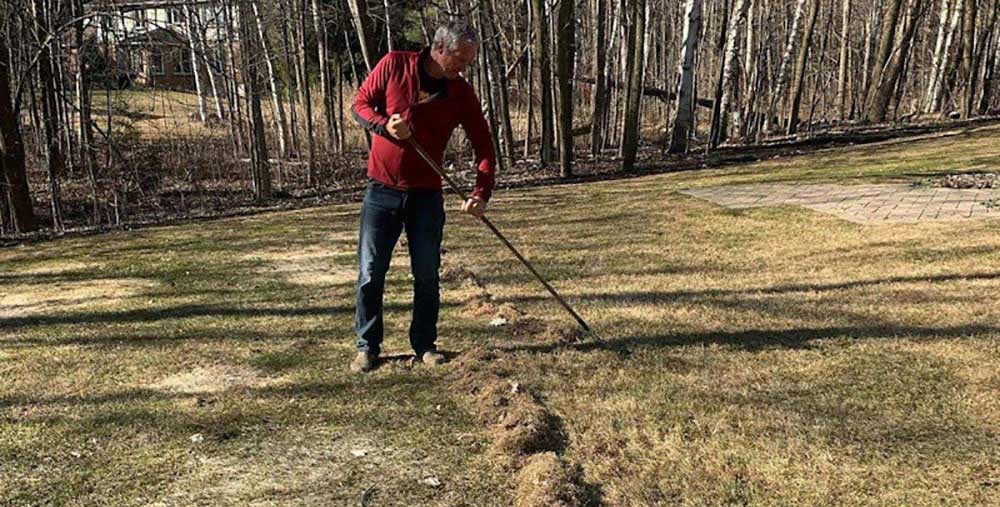Did this past winter take a serious toll on your lawn?
After temperatures slowly rise and the snow melts from your lawn, you may notice that your grass isn’t in the best shape—especially if you didn’t perform winter lawn maintenance before the first snowfall.
Crown hydration, snow mold, and winter desiccation are all common issues that you could be facing in the spring.
Fortunately, not all is lost. With a little know-how and effort, you can restore your lawn back to tip-top shape. Just be sure to follow these five essential steps!
5 Steps to Bring Your Lawn Back to Life
1. Give Your Grass a Generous Trim
Once spring arrives, the first thing you’re going to want to do is to mow your lawn. This time only, lower your mower height by two notches. This will remove the frost-damaged grass and promote new growth without scalping your lawn.
Of course, make sure you either remove all grass clippings or mulch a small amount of them.
2. Apply a High Potassium Fertilizer to Your Grass
While you should definitely be wary of over-fertilizing during the early spring, a modest amount of the right fertilizer can give your frost-damaged grass a much-needed boost.
Consider applying a fertilizer product that is high in potassium. This will help maintain balance with plant cells and aid in the recovery of your frost-damaged grass.
3. Water Your Newly Fertilized Grass
Shortly after you’ve finished fertilizing your lawn, you’ll need “water it in” with approximately half an inch of water—whether that water comes from natural rainfall or from an irrigation system.
Although you’ll be ramping up your watering efforts significantly as temperatures continue to rise—giving your grass one inch or more of water each week during the hot summer months—a half-inch is more than enough during the very early spring.
The exception, of course, is the areas that require new seeds. These areas will require a little extra water!
4. Lay New Sod and/or New Seed Where Needed
Much of the time, you’ll find that freeze damage only affects grass tips. Severe freeze damage, however, might mean that there are dead patches and bare spots scattered throughout your lawn.
Resodding is usually the best method for addressing large sections of dead grass while reseeding is viable in areas that are either bare or thin.
5. Get Professional Help from a Lawn Care Company
The challenge of bringing your grass back to life might be a job that you’d prefer to leave in the hands of a knowledgeable lawn care professional—particularly if your lawn requires some resodding and reseeding.
The local lawn care experts here at LawnMart Inc. can help! We have experience restoring lawns of all shapes and sizes. Sit back, relax, and leave all of the lawn maintenance work to us!
Ready to restore your lawn’s appearance after a cold winter? Fast-track your progress by getting in touch with the best lawn maintenance professionals in Bolton, LawnMart, Inc. We’ll make sure your lawn is back to looking its absolute best in no time!



